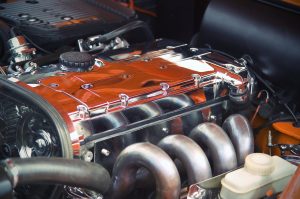
Buying a car can be a big financial commitment, but it can also be one of the best investments you make. It’s important to weigh the pros and cons of buying vs leasing your next car to find out which option is right for you.
Leasing can be a great way to drive a new car without having to pay the full price upfront. However, it’s not for everyone.
Contents
1. Lower Monthly Payments
Car leasing offers lower monthly payments than an auto loan, because you’re only paying for the depreciation of the vehicle during the lease term. Unlike with a loan, you can end your lease early without paying penalties or charges.
You can also renegotiate your lease for a lower payment, but you’ll have to pay fees and other costs associated with bringing the car back to the dealership.
The best way to save money on your lease is to choose a longer term. Typically, a term of three years (36 months) or more will spread the vehicle’s depreciation out over the entire length of the lease and thus lower your monthly payment.
2. No Down Payment
One of the benefits of leasing versus buying is that you don’t have to put as much money down when you lease. This is a significant savings because you don’t have to fork out as much cash upfront for a car, which reduces your monthly payments.
A zero down payment car lease may seem like a great deal at first glance, but you should look closely at the details. Often, there is a predetermined amount of up-front cash that you must pay, such as a security deposit or acquisition fee.
Another downside is that you’ll have to bring that cash to the dealership at the time of your lease signing, which can make it difficult for those with lower credit scores to get a good deal. However, there are companies that connect consumers with dealerships who offer subprime loans.
3. No Trade-In
Unlike buying a new vehicle with a loan, car leases do not offer any equity. This means that you have to pay off the residual debt – the price the leasing company will resell the vehicle for if it’s not returned at lease-end – every month.
The good news is that you can get some of this equity back when you turn in your leased vehicle early. But before you do, it’s important to find out the car’s buyout or payoff value from your lease company.
If the value of your leased vehicle is greater than this buyout amount, you have positive equity on the vehicle and can apply it toward the purchase of a new one. Alternatively, you can sell your leased vehicle privately and use the sale proceeds to pay off the buyout amount.
4. Limited Mileage
Most car leases have a mileage limit, which means you cannot exceed the miles allowed. If you do, you will be charged extra fees.
High-mileage drivers can avoid this by selecting a high-mileage lease, which allows them to drive more than the standard low-mileage leases.
Conventional wisdom says that drivers who are prone to driving lots of miles should stick with buying cars rather than leasing them. But that doesn’t always make sense, and a high-mileage lease can actually save you money in the long run.
Often, lessors reduce the residual value of the vehicle after a lease ends in order to recover the expected decline in resale and trade-in values due to higher mileage. This lowers the total rent charge, thereby making it cheaper to include more mileage in your lease agreement than to pay for excess miles at lease-end.
5. Limited Commitment
Car leasing is a great option for those who want to drive a new vehicle but don’t have the cash to buy one. It allows you to get a new car every two or three years without having to pay the full cost of depreciation on the vehicle.
In addition, you can renegotiate your contract or upgrade to a different car before it ends. This is a lot easier than trying to make a car loan work with your current situation.
Another benefit of car leasing is that it offers limited commitment, which makes it more appealing to many people. In addition, the monthly payments will be less expensive than a traditional loan and you won’t have to worry about your money being tied up in a depreciating asset.



